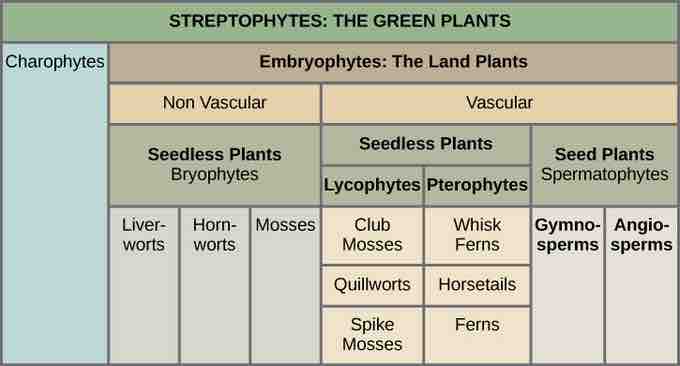The Major Divisions of Land Plants
The green algae, known as the charophytes, and land plants are grouped together into a subphylum called the Streptophytina and are, therefore, called Streptophytes. Land plants, which are called embryophytes, are classified into two major groups according to the absence or presence of vascular tissue . Plants that lack vascular tissue, which is formed of specialized cells for the transport of water and nutrients, are referred to as non-vascular plants or bryophytes. Non-vascular embryophytes probably appeared early in land plant evolution and are all seedless. These plants include liverworts, mosses, and hornworts.

Major divisions of land plants
Land plants are categorized by presence or absence of vascular tissue and their reproduction with or without the use of seeds.
In contrast, vascular plants developed a network of cells, called xylem and phloem, that conduct water and solutes throughout the plant. The first vascular plants appeared in the late Ordovician period of the Paleozoic Era (approximately 440-485 million years ago). These early plants were probably most similar to modern day lycophytes, which include club mosses (not to be confused with the mosses), and pterophytes, which include ferns, horsetails, and whisk ferns. Lycophytes and pterophytes are both referred to as seedless vascular plants because they do not produce any seeds.
The seed producing plants, or spermatophytes, form the largest group of all existing plants, dominating the landscape. Seed-producing plants include gymnosperms, most notably conifers, which produce "naked seeds," and the most successful of all modern-day plants, angiosperms, which are the flowering plants. Angiosperms protect their seeds inside chambers at the center of a flower; the walls of the chamber later develop into a fruit.